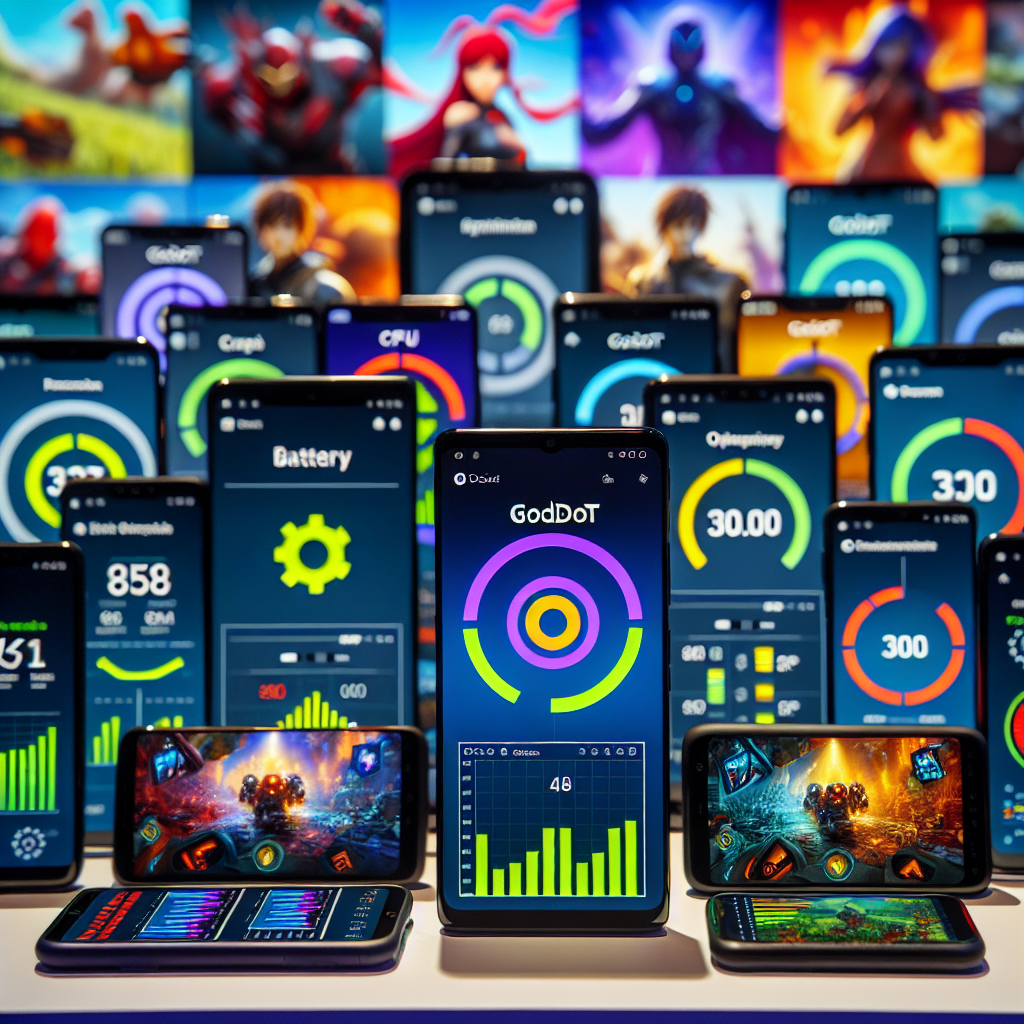Godot Mobile Game Optimization: Performance Tips for Android & iOS 2025

Mobile gaming represents over 50% of the global gaming market, making mobile optimization crucial for indie developers. Godot 4’s enhanced mobile support opens incredible opportunities, but achieving smooth 60fps gameplay while preserving battery life requires strategic optimization. Let’s explore the essential techniques that will make your Godot mobile games shine.
📱 Understanding Mobile Performance Challenges
Hardware Limitations Reality Check
Mobile devices face unique constraints that desktop games don’t encounter:
Common Mobile Bottlenecks:
- Limited GPU memory (2-8GB vs 16GB+ desktop)
- Thermal throttling after 10-15 minutes of intensive gameplay
- Battery life concerns affecting user retention
- Diverse screen resolutions from 720p to 4K
- Touch input latency requirements
1
2
3
4
5
6
7
8
9
10
11
12
13
14
15
16
17
18
19
20
21
# Performance monitoring system for mobile
extends Node
var performance_monitor = {
"fps": 0.0,
"memory_usage": 0.0,
"battery_level": 100,
"thermal_state": "normal"
}
func _ready():
# Enable mobile-specific performance tracking
Engine.max_fps = 60 # Cap FPS for battery optimization
func _process(delta):
performance_monitor.fps = Engine.get_frames_per_second()
performance_monitor.memory_usage = OS.get_static_memory_usage_by_type()
# Adjust quality based on performance
if performance_monitor.fps < 50:
reduce_graphics_quality()
🎮 Essential Rendering Optimizations
Texture Management Strategies
Compression Settings for Mobile:
| Texture Type | Android (ETC2) | iOS (ASTC) | Memory Savings |
|---|---|---|---|
| UI Elements | ETC2_RGBA8 | ASTC_4x4 | 75% reduction |
| Game Assets | ETC2_RGB8 | ASTC_6x6 | 85% reduction |
| Backgrounds | ETC2_RGB8 | ASTC_8x8 | 90% reduction |
1
2
3
4
5
6
7
8
9
10
11
12
13
14
15
16
17
18
19
20
21
22
23
24
25
26
# Dynamic texture quality system
extends Node
enum TextureQuality {
LOW,
MEDIUM,
HIGH
}
var current_quality = TextureQuality.MEDIUM
func adjust_texture_quality_based_on_device():
var system_info = OS.get_processor_name()
var memory = OS.get_static_memory_peak_usage()
if memory < 3000000000: # Less than 3GB RAM
current_quality = TextureQuality.LOW
apply_low_quality_textures()
elif memory < 6000000000: # Less than 6GB RAM
current_quality = TextureQuality.MEDIUM
apply_medium_quality_textures()
func apply_low_quality_textures():
# Dynamically reduce texture resolution
get_viewport().render_target_update_mode = SubViewport.UPDATE_WHEN_VISIBLE
RenderingServer.camera_set_use_vertical_aspect(get_viewport().get_camera_3d().get_camera_rid(), true)
Efficient Rendering Pipeline
Batch Rendering for Mobile:
1
2
3
4
5
6
7
8
9
10
11
12
13
14
15
16
17
18
19
20
21
22
23
# Mobile-optimized sprite batching system
extends Node2D
var sprite_batches = {}
var max_sprites_per_batch = 100
func add_sprite_to_batch(sprite_texture: Texture2D, position: Vector2):
var batch_key = sprite_texture.get_rid()
if not sprite_batches.has(batch_key):
sprite_batches[batch_key] = []
if sprite_batches[batch_key].size() < max_sprites_per_batch:
sprite_batches[batch_key].append({
"position": position,
"texture": sprite_texture
})
func render_batched_sprites():
for batch_key in sprite_batches:
var batch = sprite_batches[batch_key]
# Use MultiMesh for efficient rendering
render_sprite_batch(batch)
⚡ Performance Profiling and Monitoring
Real-Time Performance Tracking
1
2
3
4
5
6
7
8
9
10
11
12
13
14
15
16
17
18
19
20
21
22
23
24
25
26
27
28
29
30
31
32
33
34
35
36
37
38
39
40
41
42
43
44
45
46
47
# Advanced mobile performance profiler
extends Control
@onready var fps_label = $VBoxContainer/FPSLabel
@onready var memory_label = $VBoxContainer/MemoryLabel
@onready var draw_calls_label = $VBoxContainer/DrawCallsLabel
var performance_history = []
var warning_threshold_fps = 45
func _ready():
# Create performance overlay for mobile testing
set_anchors_and_offsets_preset(Control.PRESET_TOP_RIGHT)
modulate.a = 0.8
func _process(delta):
update_performance_metrics()
check_performance_warnings()
func update_performance_metrics():
var fps = Engine.get_frames_per_second()
var memory_mb = OS.get_static_memory_usage_by_type() / 1024 / 1024
var draw_calls = RenderingServer.get_rendering_info(RenderingServer.RENDERING_INFO_TYPE_VISIBLE, RenderingServer.RENDERING_INFO_DRAW_CALLS_IN_FRAME)
fps_label.text = "FPS: " + str(fps)
memory_label.text = "Memory: " + str(memory_mb) + " MB"
draw_calls_label.text = "Draw Calls: " + str(draw_calls)
# Store for analysis
performance_history.append({
"time": Time.get_ticks_msec(),
"fps": fps,
"memory": memory_mb,
"draw_calls": draw_calls
})
# Keep only last 100 readings
if performance_history.size() > 100:
performance_history.pop_front()
func check_performance_warnings():
var current_fps = Engine.get_frames_per_second()
if current_fps < warning_threshold_fps:
# Trigger performance optimization
emit_signal("performance_warning", current_fps)
optimize_for_low_performance()
🔋 Battery Life Optimization
Adaptive Quality System
```gdscript
Battery-conscious performance manager
extends Node
signal battery_level_changed(level: int) signal thermal_state_changed(state: String)
var battery_optimization_enabled = true var quality_levels = { “ultra”: {“particles”: 1000, “shadow_quality”: 4, “texture_quality”: 1.0}, “high”: {“particles”: 500, “shadow_quality”: 3, “texture_quality”: 0.8}, “medium”: {“particles”: 250, “shadow_quality”: 2, “texture_quality”: 0.6}, “low”: {“particles”: 100, “shadow_quality”: 1, “texture_quality”: 0.4} }
func _ready(): # Monitor battery status on mobile if OS.has_feature(“mobile”): start_battery_monitoring()
func start_battery_monitoring(): var timer = Timer.new() timer.wait_time = 30.0 # Check every 30 seconds timer.timeout.connect(check_battery_status) add_child(timer) timer.start()
func check_battery_status(): # Battery level affects performance settings var battery_
